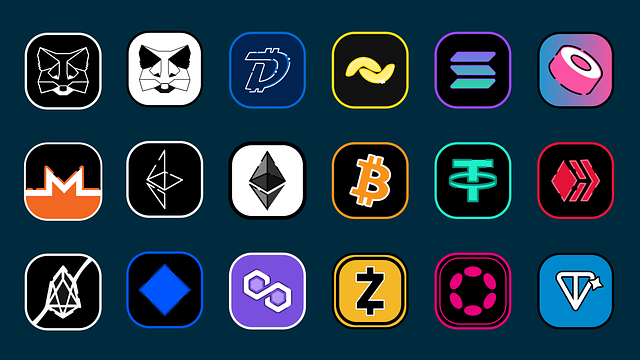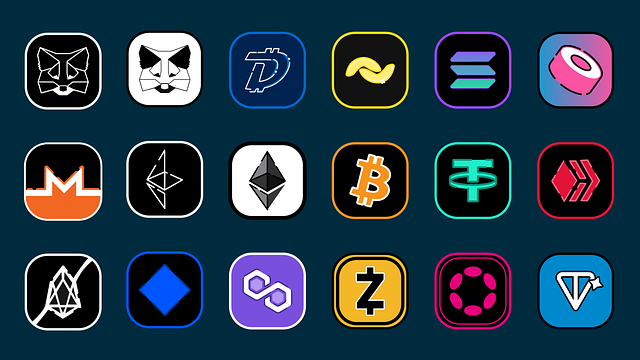Solana, launched in 2017, is a blockchain revolutionizing web3 with its high-performance capabilities, processing millions of transactions per second at minimal fees. Through innovations like Proof-of-Stake and sharding, it has overcome scalability challenges. Its collaborative community governance and strategic partnerships have driven rapid growth. With an eco-friendly consensus mechanism, Solana is poised to lead the Web3 revolution, powering decentralized applications across diverse sectors while minimizing its environmental impact.
“Unveiling the Journey of Solana: From Blockchain Genesis to Web3 Pioneer
Solana, a blockchain project that has sparked significant interest, is making headlines for its remarkable rise. This article traces the key developments that propelled Solana into the spotlight, from its early conception to its current status as a go-to solution for scalable and sustainable transactions. We explore pivotal moments, including its launch, community governance, and strategic partnerships, showcasing how Solana is reshaping the Web3 landscape.”
- The Genesis of Solana: Birth of a Blockchain Project
- Launch and Early Adopters: Setting the Stage
- Scalability Challenges and Solutions: Breaking Through Barriers
- Solana's Governance and Community: A Collaborative Approach
- Partnerships and Adoption: Gaining Momentum
- Environmental Concerns and Sustainability: A Balancing Act
- Future Prospects: Solana's Evolving Role in Web3
The Genesis of Solana: Birth of a Blockchain Project

Solana, a blockchain project that has gained significant traction in recent years, emerged as an innovative solution to the challenges faced by existing cryptocurrencies and decentralized applications (dApps). The genesis of Solana began with a team of visionary developers who aimed to create a fast, scalable, and highly performant blockchain network. Founded in 2017, the project quickly garnered attention for its unique architecture and promise to address the scalability issues plaguing many other blockchains.
The development team behind Solana focused on building a blockchain that could support millions of transactions per second while maintaining low transaction fees. This ambitious goal was achieved through the introduction of a novel consensus algorithm, known as Proof-of-Stake (PoS), and an innovative data structure called a “merkle proof.” These innovations enabled Solana to achieve remarkable speeds and efficiency, setting it apart from its competitors and positioning it as a formidable contender in the blockchain space.
Launch and Early Adopters: Setting the Stage

Solana, a high-performance blockchain platform, made its grand entrance in 2017 with a vision to revolutionize the web3 space. The launch was a strategic move, capitalizing on the growing demand for faster and more efficient transaction processing. Early adopters, including prominent developers and tech enthusiasts, quickly recognized Solana’s potential. They embraced the platform’s unique ability to handle millions of transactions per second, setting a new benchmark in the blockchain industry. This initial surge of support laid the foundation for Solana’s rapid ascent, attracting a dedicated community eager to explore its capabilities.
The early adopter community played a pivotal role in shaping Solana’s trajectory. They began building decentralized applications (dApps) and exploring use cases that leveraged Solana’s scalability and low transaction fees. This period witnessed the emergence of various projects, from decentralized finance (DeFi) protocols to non-fungible token (NFT) marketplaces, all contributing to Solana’s growing reputation as a versatile and powerful blockchain solution. As word spread, more developers joined the movement, further solidifying Solana’s position as a key player in the blockchain revolution.
Scalability Challenges and Solutions: Breaking Through Barriers

Solana faced significant scalability challenges early on, a common hurdle for many blockchain projects. The network struggled to handle a high volume of transactions, leading to increased fees and slower processing times. To break through these barriers, the Solana team implemented several innovative solutions. One key development was the introduction of a new consensus mechanism, called Proof-of-Stake (PoS), which replaced the traditional Proof-of-Work (PoW) system. PoS allowed for faster validation of transactions and reduced energy consumption, addressing a critical issue for scalability.
Additionally, Solana introduced multiple layers of optimization to enhance its performance. These included improvements in sharding, where the blockchain is divided into smaller parts, enabling parallel processing and significantly increasing capacity. The network also implemented off-chain solutions, such as sidechains and layer-2 scaling protocols, to offload some transaction load while maintaining security. These breakthroughs have positioned Solana as a serious competitor in the blockchain space, capable of handling thousands of transactions per second with low fees, addressing the scalability challenges that had long plagued the industry.
Solana's Governance and Community: A Collaborative Approach

Solana’s governance structure is unique in the blockchain space, relying heavily on a collaborative community approach. This decentralized model allows for decision-making processes that are inclusive and transparent. The Solana community plays an active role in shaping the project’s direction through various mechanisms, including voting on proposals and participating in forums where discussions around feature additions, upgrades, and strategic partnerships take place.
This collaborative spirit has fostered a strong sense of ownership among Solana enthusiasts worldwide, leading to rapid development and continuous innovation. As a result, Solana has established itself as a formidable competitor in the blockchain arena, gaining traction among developers and users alike. The community’s dedication and collective efforts have been instrumental in driving Solana’s success, ensuring its evolution remains guided by those who actively engage with and believe in its potential.
Partnerships and Adoption: Gaining Momentum

As Solana gained traction within the cryptocurrency community, partnerships and adoption played a pivotal role in its rise. Major players in the industry recognized the potential of this blockchain, leading to strategic alliances that boosted its credibility and use cases. In 2021, Solana became a preferred choice for decentralized applications (dApps) due to its fast transaction speeds and low fees, attracting developers seeking to create innovative projects.
This momentum was further fueled by collaborations with prominent companies and organizations. For instance, partnerships with major fintechs and payment processors enabled seamless integration of Solana into various financial services, increasing its accessibility and real-world applications. As a result, the solana ecosystem expanded rapidly, fostering a vibrant community of developers, investors, and users who contributed to its ongoing development and success.
Environmental Concerns and Sustainability: A Balancing Act

As Solana’s popularity surges, environmental concerns and sustainability become increasingly important aspects to address. The blockchain industry, known for its energy-intensive processes, has faced scrutiny over its carbon footprint. Solana, with its proof-of-stake consensus mechanism, presents a more environmentally friendly alternative compared to its energy-guzzling counterparts. This shift towards sustainability is crucial as the tech space strives to become greener.
However, balancing the network’s growth and security while minimizing environmental impact remains a delicate task. As Solana continues to evolve, developers and enthusiasts must advocate for eco-conscious practices, pushing for more efficient solutions and raising awareness about the platform’s positive strides in sustainable technology.
Future Prospects: Solana's Evolving Role in Web3

As we look ahead, Solana’s future prospects are promising, positioning it as a key player in the evolving Web3 landscape. Its ability to handle high transaction volumes with low fees and fast processing times makes it an attractive option for decentralized applications (dApps) and smart contracts. With a growing ecosystem of developers and users, Solana is poised to facilitate more complex and resource-intensive blockchain applications.
The network’s scalability and energy efficiency gains are expected to drive its adoption in various sectors, from finance and gaming to supply chain management and beyond. As the demand for decentralized solutions continues to surge, Solana’s role in shaping the future of Web3 is set to become increasingly significant, fostering innovation and creating new opportunities for developers worldwide.
Solana has embarked on an impressive journey, evolving from a blockchain project to a prominent player in the Web3 landscape. Key developments, from its genesis and launch to scalability solutions and community governance, have positioned Solana as a game-changer. As the network navigates environmental concerns, it continues to foster partnerships and adoption, shaping a sustainable future. In summary, Solana’s timeline illustrates its remarkable growth and potential to revolutionize the blockchain industry.








Leave a Reply